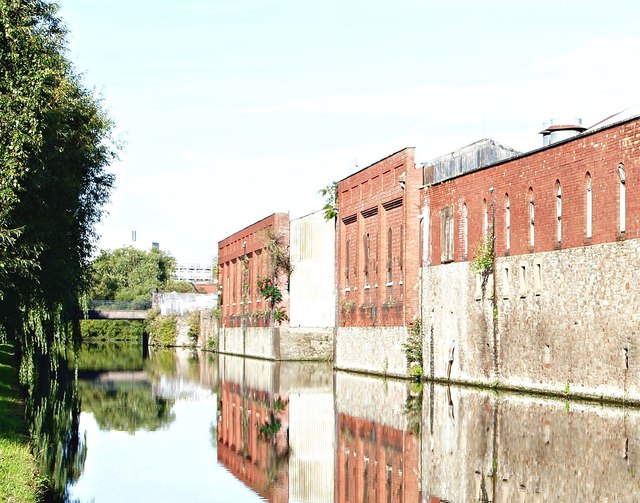Feeder Road, St Philip's, Bristol
Introduction
The photograph on this page of Feeder Road, St Philip's, Bristol by David Hallam-Jones as part of the Geograph project.
The Geograph project started in 2005 with the aim of publishing, organising and preserving representative images for every square kilometre of Great Britain, Ireland and the Isle of Man.
There are currently over 7.5m images from over 14,400 individuals and you can help contribute to the project by visiting https://www.geograph.org.uk

Image: © David Hallam-Jones Taken: 13 Aug 2017
The successful galvanised metal manufacturer John Lysaghts (1832-95), who already had a factory near Temple Meads railway station, purchased the “Bristol Iron Works” in 1869. Lysaght was born in Mallow, County Cork and came to Bristol as a young man. In 1857 he acquired a small business in Temple Backs and began his production of galvanised buckets. Lysaght specialised in hot dip galvanised sheets and soon expanded into fencing wire, sheep and game netting, cattle, sheep and pig troughs, cow cribs, tanks and cisterns and gallon beer cans. One important product for the mostly bathroomless Victorian household was his galvanised bathtub. In 1876 he broke new ground producing ornate ironwork for public and exhibition buildings, churches, railway stations, and bridges. Lysaghts became one of Bristol's best known manufacturers, exporting all over the world. Eventually the company became part of the Guest, Keen and Nettlefold (GKN) Group before linking up with New York company Rheem Manufacturing to form Rheem Lysaght. By 1965, the whole site was being used to make steel drums and the diverse products of the past were forgotten. Four years later, Rheem Lysaght merged with part of Blagden and Noakes (Holdings) and became Blagden Packaging. Marsh Bridge can be seen ahead crossing this particular section of the Floating Harbour.

